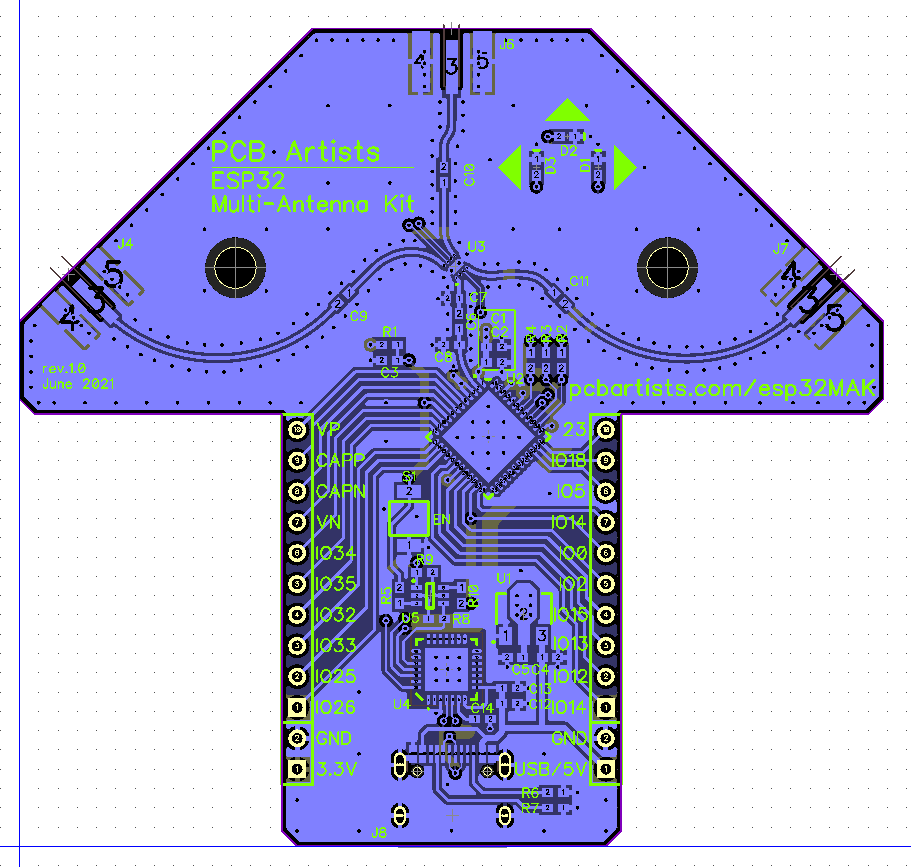An ESP32 multiple antenna design can be very useful in situations where you would like to have reliable WiFi link, for example, in audio streaming applications or high reliability links for use with industrial controllers and similar applications.
There are several advantages that we have noticed when using ESP32 in a multiple antenna configuration.
Advantages of ESP32 Multiple Antenna Configuration
- Longer Wi-Fi range
Using multiple antennas means that the antennas form an almost-perfect omnidirectional antenna system, but with a good directional gain per antenna. This gives you better range than using one omnidirectional antenna. - High link reliability
An obstruction or change in orientation of the ESP32 system can often cause the link quality to degrade significantly. This happens because antennas have a non-omnidirectional patterns in most cases, with a “blind spot” along the axis of the antenna. Using ESP32 in drones or UAVs and on moving systems can cause link quality issues when the ESP32 moves around too much. Multiple antennas solve this problem. - Detuning-resistant design
Are you worried about detuning of the antenna because of severe change in operating conditions? Multiple antennas can solve this problem. If your device is partial frozen or might be buried in something that changes antenna characteristics, it is possible to use multiple antennas, one for each expected operating condition. This way, all use cases offer good Wi-Fi range.
ESP32 Evaluation Kit for Multiple Antenna Setup

The ESP32 can select and use any of the three SMA antennas for reception and transmission.
This method of using multiple antennas can be used with dual chip antennas too, aligned at 90 degrees to each other, separated by at least half a wavelength for best results.
This Shure article on antenna positioning practices mentions relative positioning of a multiple antenna receiver and a single antenna microphone – comparing the performance at various relative angles between the transmitter and receiver. A dual antenna system has a clear advantage over a single antenna system as shown by the gain chart.
Need the Multi-Antenna Evaluation Kit?
We might have some for you soon!
Please make sure you drop a message using the quick contact form in the sidebar.
Please fill in the Subscription Form in the sidebar so we can keep you updated with our latest articles.
We only mail you less than 2 times a month.
Change Log
- Initial Release: 10 June 2021
References
- None